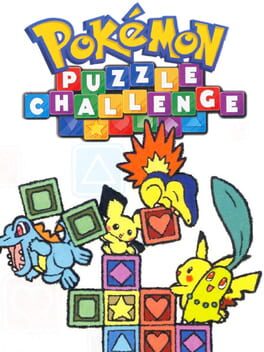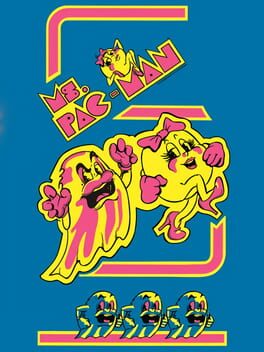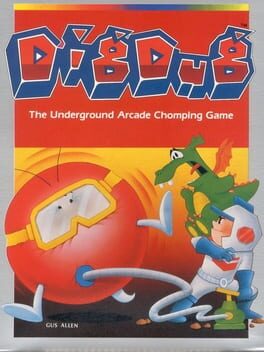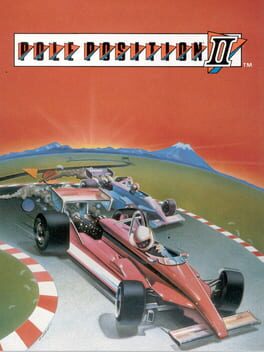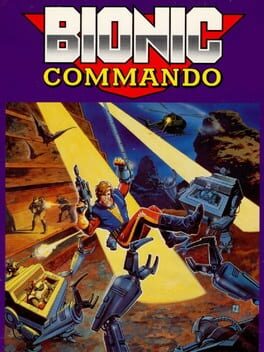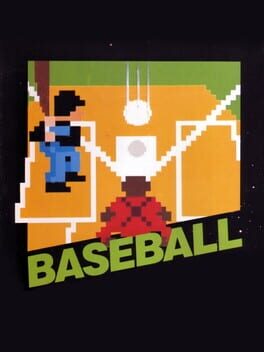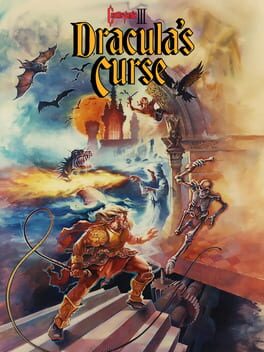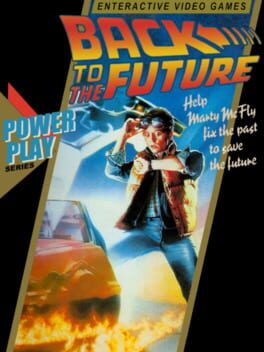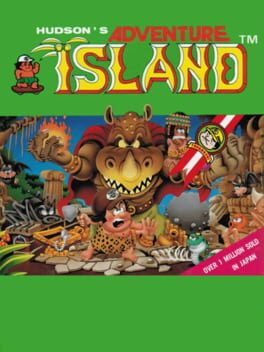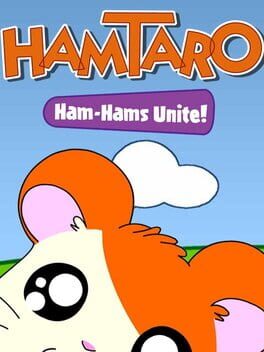LilSwampAss
So far I've only played through the challenge mode a handful of times (put to Super-Hard) and I gotta say this is pretty fantastic stuff.
Now that the college semester has started up again, I've had a lot of free time on my hands waiting between classes and waiting for the train (no homework yet to fill the void). This is exactly what I need right now to fill that time.
Now that the college semester has started up again, I've had a lot of free time on my hands waiting between classes and waiting for the train (no homework yet to fill the void). This is exactly what I need right now to fill that time.
1982
Every Atari 7800 Game #3/59 - Ms. Pac-Man
__________________________________________________________________________
Like Pole Position II and Dig Dug, Ms. Pac-Man is another Namco classic converted exceptionally well to the 7800. Again, this might be the best port of Ms. Pac-Man you could buy in North America up to this point (or at least I think it would be that way until the Tengen and Namco ports came out on the NES, though that doesn't matter chronologically because that was years after).
I'm no Pac-Man expert, but I feel like the ghosts move similarly to how they do in the original arcade release. Nothing on that felt odd or out of place. I note this because the ghost pathfinding is rather sophisticated in Pac-Man and in this game, so I feel like I can expect the ghosts to move differently in the home ports. Here, it seems to be the same (maybe). Then again, this port is coming from the company that made the original Arcade release, so a closet fit is expected. Ms. Pac-Man also controls as you would expect. movement is fluid and mistakes are never the game's fault.
Graphics are again chunky but they represent the original sprites perfectly fine.
The game's biggest flaws are merely flaws with the original game, like the occasionally random pathfinding and the poorly balanced stages. I will firmly state that Pac-Man as a much better game than Ms. Pac-Man.
There's not a lot of new content here compared to the arcade release. What we do get is a kid's mode like Dig Dug, which consists of an easier, slower beginner's level before the normal start. Also, we get a level selection up to the first banana stage. These additions, while few, are pretty great to have for a home experience, and it's not really a big deal that there's so few new content because the main experience is ported wonderfully. This seems to be another cheap pick-up, so you really don't have a reason to not have this one if you're collecting.
8/10
__________________________________________________________________________
Like Pole Position II and Dig Dug, Ms. Pac-Man is another Namco classic converted exceptionally well to the 7800. Again, this might be the best port of Ms. Pac-Man you could buy in North America up to this point (or at least I think it would be that way until the Tengen and Namco ports came out on the NES, though that doesn't matter chronologically because that was years after).
I'm no Pac-Man expert, but I feel like the ghosts move similarly to how they do in the original arcade release. Nothing on that felt odd or out of place. I note this because the ghost pathfinding is rather sophisticated in Pac-Man and in this game, so I feel like I can expect the ghosts to move differently in the home ports. Here, it seems to be the same (maybe). Then again, this port is coming from the company that made the original Arcade release, so a closet fit is expected. Ms. Pac-Man also controls as you would expect. movement is fluid and mistakes are never the game's fault.
Graphics are again chunky but they represent the original sprites perfectly fine.
The game's biggest flaws are merely flaws with the original game, like the occasionally random pathfinding and the poorly balanced stages. I will firmly state that Pac-Man as a much better game than Ms. Pac-Man.
There's not a lot of new content here compared to the arcade release. What we do get is a kid's mode like Dig Dug, which consists of an easier, slower beginner's level before the normal start. Also, we get a level selection up to the first banana stage. These additions, while few, are pretty great to have for a home experience, and it's not really a big deal that there's so few new content because the main experience is ported wonderfully. This seems to be another cheap pick-up, so you really don't have a reason to not have this one if you're collecting.
8/10
1986
Every Atari 7800 Game #2/59 - Dig Dug
__________________________________________________________________________
Considering the launch line-up I'm going through right now, Atari definitely targeted this console initially to people who wanted to play arcade games at home. I'd say that's definitely a good choice considering just how good Atari has been so far with arcade conversions here. This is undoubtedly the best port of Dig Dug you could have bought at the time of release in North America (The Famicom port beats this out, but that didn't come to the NES).
I've always really loved Dig Dug. You can really tell based on the cutsie visuals and the brilliant risk vs. reward arcade goodness that this is a post Pac-Man Namco title. I'm not going to go in-depth because if you're reading this you've played Dig Dug, but just know that this is definitely an exceptionally well-designed Arcade title.
As a port, The Atari 7800's Dig Dug comes about as close as possible to the original. The graphics are chunky and the audio isn't as good, but that's up to the low resolution and the bad base sound of the 7800. Then again, I can't say the graphics or sound are bad. For what the 7800 is, the sound is actually very great, and the graphics are still really detailed and readable. The controls felt pretty spot-on, but I will note I haven't played the original game in a while. I just know that playing the 7800 version felt great.
This doesn't matter to me at all, but it's worth noting that this game comes with a kids mode, offering a slower and easier version of the base game for newcomers. If you're introducing a young kid to Dig Dug, you might as well go with this one.
This is certainly a must-have title for the 7800 and thankfully it's a very cheap pick-up (same with Pole Position II, sitting around 5 bucks). You really don't have much of a reason to not try it.
8/10
__________________________________________________________________________
Considering the launch line-up I'm going through right now, Atari definitely targeted this console initially to people who wanted to play arcade games at home. I'd say that's definitely a good choice considering just how good Atari has been so far with arcade conversions here. This is undoubtedly the best port of Dig Dug you could have bought at the time of release in North America (The Famicom port beats this out, but that didn't come to the NES).
I've always really loved Dig Dug. You can really tell based on the cutsie visuals and the brilliant risk vs. reward arcade goodness that this is a post Pac-Man Namco title. I'm not going to go in-depth because if you're reading this you've played Dig Dug, but just know that this is definitely an exceptionally well-designed Arcade title.
As a port, The Atari 7800's Dig Dug comes about as close as possible to the original. The graphics are chunky and the audio isn't as good, but that's up to the low resolution and the bad base sound of the 7800. Then again, I can't say the graphics or sound are bad. For what the 7800 is, the sound is actually very great, and the graphics are still really detailed and readable. The controls felt pretty spot-on, but I will note I haven't played the original game in a while. I just know that playing the 7800 version felt great.
This doesn't matter to me at all, but it's worth noting that this game comes with a kids mode, offering a slower and easier version of the base game for newcomers. If you're introducing a young kid to Dig Dug, you might as well go with this one.
This is certainly a must-have title for the 7800 and thankfully it's a very cheap pick-up (same with Pole Position II, sitting around 5 bucks). You really don't have much of a reason to not try it.
8/10
1983
Every Atari 7800 Game #1/59 - Pole Position II
__________________________________________________________________________
For an intended 1983-84 release, Pole Position II is very impressive, especially in terms of visuals. I can't really think of any game consoles at this time in North America that could have produced something that looked better than this, so I get the feeling that if the 7800 had been released at its intended time frame, it would have been a major success compared to how it's viewed now, being the tertiary 8-bit console far behind Sega and Nintendo.
However, the delayed release does not alter the fact that Pole Position II is a really fun game and is a great port. While on the surface the game appears to be really lacking in content, with there only being 4 tracks, I can't say that the experience gets boring ever. There are only 4 tracks, but each one is much harder than the previous one, and the first test track is a perfect tutorial. Perfect enough that it makes you really want to conquer the other 3 and race for better scores. I think my only problem with how the game itself plays is that the rival racers on the track can be really hard to avoid. It feels like if even a single pixel collides you're going up in flames (Maybe this is accurate to F-1 races?).
As stated previously, this game is visually stunning for the time it came out (based on my admittedly limited knowledge of other games of the time). Porting Pole Position II was a great idea, particularly for showcasing the graphical capabilities of the 7800. Pixels are still rather chunky and large like previous Atari consoles, but I think there are more options in terms of colors and the resolution is probably larger (I'm guessing). It's hard to explain, but I do feel that this game looks fantastic.
I'm noticing early that Atari 7800 games kind of fall behind in terms of audio. The base audio capabilities feel in line with the aging 2600, so the music jingles in this game sound rather strange. Then again, not a huge deal.
7/10
__________________________________________________________________________
For an intended 1983-84 release, Pole Position II is very impressive, especially in terms of visuals. I can't really think of any game consoles at this time in North America that could have produced something that looked better than this, so I get the feeling that if the 7800 had been released at its intended time frame, it would have been a major success compared to how it's viewed now, being the tertiary 8-bit console far behind Sega and Nintendo.
However, the delayed release does not alter the fact that Pole Position II is a really fun game and is a great port. While on the surface the game appears to be really lacking in content, with there only being 4 tracks, I can't say that the experience gets boring ever. There are only 4 tracks, but each one is much harder than the previous one, and the first test track is a perfect tutorial. Perfect enough that it makes you really want to conquer the other 3 and race for better scores. I think my only problem with how the game itself plays is that the rival racers on the track can be really hard to avoid. It feels like if even a single pixel collides you're going up in flames (Maybe this is accurate to F-1 races?).
As stated previously, this game is visually stunning for the time it came out (based on my admittedly limited knowledge of other games of the time). Porting Pole Position II was a great idea, particularly for showcasing the graphical capabilities of the 7800. Pixels are still rather chunky and large like previous Atari consoles, but I think there are more options in terms of colors and the resolution is probably larger (I'm guessing). It's hard to explain, but I do feel that this game looks fantastic.
I'm noticing early that Atari 7800 games kind of fall behind in terms of audio. The base audio capabilities feel in line with the aging 2600, so the music jingles in this game sound rather strange. Then again, not a huge deal.
7/10
[Played on Retron 5 with Original Cartridge]
Chip 'n Dale Rescue Rangers isn't a show I've ever seen before. I generally stay away from 80's American animation cause it always felt kind of lifeless and stilted for a lot of the 80's cartoons I used to watch (mainly all the Nintendo ones). I just say that to note that I've never seen this show or really much of any other Disney Afternoon content beyond maybe a couple of episodes of DuckTales.
Besides that, I really like this game. Among the large NES library, this is undoubtedly one of the classics. Chip n' Dale Rescue Rangers for the NES is a perfectly solid and fun platform action title, especially if you're enjoying the simultaneous co-op. My only real problem is that I don't exactly have a lot to say about this game beyond the co-op. It's essentially what you can expect from a Capcom NES title, and that is indeed a good thing in terms of overall quality. It's a short run-through and it's quite easy, but it's certainly a great time.
8/10
Chip 'n Dale Rescue Rangers isn't a show I've ever seen before. I generally stay away from 80's American animation cause it always felt kind of lifeless and stilted for a lot of the 80's cartoons I used to watch (mainly all the Nintendo ones). I just say that to note that I've never seen this show or really much of any other Disney Afternoon content beyond maybe a couple of episodes of DuckTales.
Besides that, I really like this game. Among the large NES library, this is undoubtedly one of the classics. Chip n' Dale Rescue Rangers for the NES is a perfectly solid and fun platform action title, especially if you're enjoying the simultaneous co-op. My only real problem is that I don't exactly have a lot to say about this game beyond the co-op. It's essentially what you can expect from a Capcom NES title, and that is indeed a good thing in terms of overall quality. It's a short run-through and it's quite easy, but it's certainly a great time.
8/10
1988
[Played on Retron 5 with the original cartridge]
Bionic Commando is a game that really takes time to get used to. Your bionic arm is an excellent and fun way to maneuver around the levels but you aren't gonna be very great with it immediately. You really need to practice with it.
I kind of had a hard time getting through this one, so I kind of lost a lot of my motivation to push onward. I wouldn't say the game is unfairly difficult though. My only gripe is enemies can sometimes parachute right over you when you're trying to accomplish a platforming puzzle and that can be extremely annoying. I guess you just have to take it slowly.
I'm not sure why but I liked the structure of the game a lot, going through levels and obtaining new items from beating them or from non-combat areas, and being able to customize your loadout each level. It's not as fun when you're required to use a specific item for a specific level, but usually, levels don't do that much, so you're more capable of just playing how you want.
Overall this is just a good, solid game. Well worth at least trying.
7/10
Bionic Commando is a game that really takes time to get used to. Your bionic arm is an excellent and fun way to maneuver around the levels but you aren't gonna be very great with it immediately. You really need to practice with it.
I kind of had a hard time getting through this one, so I kind of lost a lot of my motivation to push onward. I wouldn't say the game is unfairly difficult though. My only gripe is enemies can sometimes parachute right over you when you're trying to accomplish a platforming puzzle and that can be extremely annoying. I guess you just have to take it slowly.
I'm not sure why but I liked the structure of the game a lot, going through levels and obtaining new items from beating them or from non-combat areas, and being able to customize your loadout each level. It's not as fun when you're required to use a specific item for a specific level, but usually, levels don't do that much, so you're more capable of just playing how you want.
Overall this is just a good, solid game. Well worth at least trying.
7/10
1992
Bonk's Adventure is an okay platformer. The goofy nature of the game is really fun, but the game itself isn't anything to go crazy over. It doesn't even really have any challenge to keep you staying on it. It's a little fun while it lasts but not fun enough to really make you want to pop it in again.
1983
[Played on Retron 5 with the original cartridge]
Nintendo's Baseball is a rather basic interpretation of the sport.
There are no stats. There are no distinct players. There is no customization. There is no fielding control beyond what base you throw to. Pitching is as simple as choosing your throwing speed and your curve. Hitting is as simple as moving your batter and swinging (or pausing mid-swing to bunt). That's essentially everything provided here, so it makes sense that people through the modern lense view this as bare-bones.
Compared to many baseball games of the time, this is pretty outstanding. When viewed against Atari's home run and the offerings on Mattel's Intellevision and Epoch's Casette vision version, this is clearly far ahead. It may not be another level of complexity in comparison, but the game is certainly closer to the physical sport, especially on a visual level.
I think my only gameplay gripe is that of the fielding. I often felt like the ball would go straight through my players and that some would just stop trying to go for the ball even if they were closer than the outfielders. Don't even get me started on how slow they can be. Sure this is kind of a double-edged sword because it can really help you if you're the one batting, but then again I do wish I had some more sense of control in this.
At least I can say that everything else feels fine. I'm really not a big sports game guy, but I can appreciate how approachable this title is. It's just your basic no-nonsense baseball, and that can be kind of problematic in the sense that it's very easily overshadowed, but I can't say this is bad at all.
Sadly, I still don't know if I would call this good either. I appreciate what's here but I would never go out of my way to play this (at least alone). I guess part of that has to do with there being so many other Baseball titles on the NES to choose from, and so many better multiplayer games too. Despite those feelings I have, I can admire what's done here. Considering how cheap this title is, you really don't have a reason to not pick it up (unless you just really hate baseball). Even if you don't like it it's only about a fiver lost, and you should still have plenty of fun with a friend, even if this isn't exactly anything good in the modern day.
Nintendo's Baseball is a rather basic interpretation of the sport.
There are no stats. There are no distinct players. There is no customization. There is no fielding control beyond what base you throw to. Pitching is as simple as choosing your throwing speed and your curve. Hitting is as simple as moving your batter and swinging (or pausing mid-swing to bunt). That's essentially everything provided here, so it makes sense that people through the modern lense view this as bare-bones.
Compared to many baseball games of the time, this is pretty outstanding. When viewed against Atari's home run and the offerings on Mattel's Intellevision and Epoch's Casette vision version, this is clearly far ahead. It may not be another level of complexity in comparison, but the game is certainly closer to the physical sport, especially on a visual level.
I think my only gameplay gripe is that of the fielding. I often felt like the ball would go straight through my players and that some would just stop trying to go for the ball even if they were closer than the outfielders. Don't even get me started on how slow they can be. Sure this is kind of a double-edged sword because it can really help you if you're the one batting, but then again I do wish I had some more sense of control in this.
At least I can say that everything else feels fine. I'm really not a big sports game guy, but I can appreciate how approachable this title is. It's just your basic no-nonsense baseball, and that can be kind of problematic in the sense that it's very easily overshadowed, but I can't say this is bad at all.
Sadly, I still don't know if I would call this good either. I appreciate what's here but I would never go out of my way to play this (at least alone). I guess part of that has to do with there being so many other Baseball titles on the NES to choose from, and so many better multiplayer games too. Despite those feelings I have, I can admire what's done here. Considering how cheap this title is, you really don't have a reason to not pick it up (unless you just really hate baseball). Even if you don't like it it's only about a fiver lost, and you should still have plenty of fun with a friend, even if this isn't exactly anything good in the modern day.
Castlevania III is a perfect evolution of the first Castlevania title. You get double, maybe triple the stages. You get multiple different routes to castle Dracula. You even get 3 new and completely different playable characters. It blows my fucking mind that this amount of replayability was put into an NES game, and it blows my mind even harder that this can actually compete against the original in terms of quality, and Castlevania was already one of the console's finest gems.
My only major gripe with the title is just how difficult the American release is. As far as I know, the original version of Castlevania on the FDS maintained the same level of difficulty that we saw in the west (minus a save feature cut out of the American release if you think that counts as difficulty adjustment). In Castlevania III, a lot of the game's balancing is altered to make the game tougher for you to beat. Like Castlevania, enemies all take away the same amount of health based on where you are in the game. It was definitely a flaw in the original, but it's way more noticeable here because the Japanese release was more fair, with health removed being determined by what you were hit by rather than your position in the game. Similarly, the western release alters where subweapons are dropped and what is given, but that's more of a case-by-case thing, and can actually end up helping in places.
So, after almost a week of grinding out the base American copy I own, I decided to apply a patch through my Retron 5 that would turn Castlevania III back into Akumajou Densetsu. I definitely think this is the way to go if you wish to play this game. The game has insane audio-enhanced sound and, as mentioned previously, is much more of a fair challenge.
And briefly on that music, man is it something else. The addition of the audio enhancements within the Akumajou Densetsu cart really makes a difference. It's probably one of the best soundtracks of any game on the console, possibly taking the #1 spot. Hell, even in the downgraded 5-channel American release, the songs still sound fantastic.
Visuals are also as brilliant as those seen in Castlevania. I think a lot of the backdrops look much better here though, most likely a result of more experience considering this is a much later release.
Honestly there's really nothing at all holding the game back from an easy 10/10 score. Even when I was being beaten by the American release, I was having so much fun with it. I think at this point I'm comfortable in saying that this is better than Castlevania. I'm at least confident that the Japanese Akumajou Densetsu is better.
Also lots of points for being the blueprint for the equally amazing Netflix series.
10/10
My only major gripe with the title is just how difficult the American release is. As far as I know, the original version of Castlevania on the FDS maintained the same level of difficulty that we saw in the west (minus a save feature cut out of the American release if you think that counts as difficulty adjustment). In Castlevania III, a lot of the game's balancing is altered to make the game tougher for you to beat. Like Castlevania, enemies all take away the same amount of health based on where you are in the game. It was definitely a flaw in the original, but it's way more noticeable here because the Japanese release was more fair, with health removed being determined by what you were hit by rather than your position in the game. Similarly, the western release alters where subweapons are dropped and what is given, but that's more of a case-by-case thing, and can actually end up helping in places.
So, after almost a week of grinding out the base American copy I own, I decided to apply a patch through my Retron 5 that would turn Castlevania III back into Akumajou Densetsu. I definitely think this is the way to go if you wish to play this game. The game has insane audio-enhanced sound and, as mentioned previously, is much more of a fair challenge.
And briefly on that music, man is it something else. The addition of the audio enhancements within the Akumajou Densetsu cart really makes a difference. It's probably one of the best soundtracks of any game on the console, possibly taking the #1 spot. Hell, even in the downgraded 5-channel American release, the songs still sound fantastic.
Visuals are also as brilliant as those seen in Castlevania. I think a lot of the backdrops look much better here though, most likely a result of more experience considering this is a much later release.
Honestly there's really nothing at all holding the game back from an easy 10/10 score. Even when I was being beaten by the American release, I was having so much fun with it. I think at this point I'm comfortable in saying that this is better than Castlevania. I'm at least confident that the Japanese Akumajou Densetsu is better.
Also lots of points for being the blueprint for the equally amazing Netflix series.
10/10
1997
Donkey Kong Land III follows up well on what made the 2nd Donkey Kong Land so much better than the first. It's mostly more of the same and I think that's a good thing. My only major problem is that the screen view is still rather limited, and it really harms the water levels and the sled levels. And sadly, this still pales in comparison to the console counterpart. Despite that, this is still a good game.
[Played on Retron 5 with original cartridge]
Castlevania II: Simon's Quest gets a lot of hate nowadays. Hate which I can definitely agree with. This game is pretty damn cryptic about its secrets, and a lot of them are near impossible to figure out on your own considering how bad the English translation is. The gameplay is completely different from Castlevania, and none of the fair action challenges is really present. Hell, the game isn't tough in the slightest.
Some of its issues are kind of excusable for me though. I'm fine with playing cryptic games nowadays, considering walkthroughs and strategy guides exist (I always used to read NES strategy guides when I was a kid so it's always pretty nostalgic). Castlevania II's gameplay changes are frustrating for a diehard fan of the first and third Castlevanias, but as flawed as it is here, this paved the way for the future of the Castlevania series. While this game is definitely not great, barely being good, it's pretty admirable.
My favorite part of this game is definitely the story. Castlevania II follows up Castlevania rather directly, beginning with Dracula cursing Simon at the end of their duel in the first game, perfectly explaining Simon's weak state and the new RPG elements like the level up system. Additionally, Dracula only revives every 100 years, so it makes perfect sense that Simon starts without his kit of subweapons. The need to collect Dracula's body parts is pretty cool because you have to dive into 5 mansions dedicated to Dracula's worship. That sounds cool as fuck on paper but the mansions are rather boring in design, feeling like enemies and platforms were just thrown together with little consideration for fair challenge.
That need to explore 5 mansions leads to the need to explore a more open world in a more non-linear way. It's pretty cool, but I found it really easy to lose my place in the world. Not good considering the multiple endings separated by how many days it takes for Simon to complete his mission. This is where the real challenge comes from, stringing together all your objectives so that you reach the end with enough time to get the best ending. Admittedly, it was pretty fun strategizing my run-through, and at the end of all my strategizing, I ended up smashing Dracula on my 5th day, obtaining the best ending. So, while the day-night cycle can be really annoying in-game, especially on your way to a town, there's that little benefit from it all.
Graphically, Simon's Quest seems to replicate a lot of the quality from the original. The major difference is the game's use of colors, being a lot darker, not nearly as colorful. I see how this matches the darker tone of this game, with Simon slowly withering away due to Dracula's curse, but I just found this visual change to be really gross and displeasing. I think if Simon wasn't basically in the middle of the screen for most of the playthrough, I might have lost him in some of the backgrounds.
The soundtrack is just as excellent as the previous game. You can really say this about most Castlevania games. I don't think they ever really skimp out on the OST.
I guess the best way to sum up Simon's Quest is to say that it has some great ideas but it's executed pretty poorly. With the shift in gameplay, a lot of the charm and fun of Castlevania is lost here, something I don't believe was lost in future titles like Symphony of the Night, which picked up this style. I can understand why people like this game a lot, considering some of the general fun of Castlevania is still here, whipping monsters and fighting bosses (which you can just walk under...), but I cannot honestly say this is anywhere as good as the other Castlevania titles, nor is it as good as most of the other landmark NES titles. Against Castlevania, which hasn't aged a day, this game's aged a lifetime, and it's hard for me to call it anymore than okay.
6/10
Castlevania II: Simon's Quest gets a lot of hate nowadays. Hate which I can definitely agree with. This game is pretty damn cryptic about its secrets, and a lot of them are near impossible to figure out on your own considering how bad the English translation is. The gameplay is completely different from Castlevania, and none of the fair action challenges is really present. Hell, the game isn't tough in the slightest.
Some of its issues are kind of excusable for me though. I'm fine with playing cryptic games nowadays, considering walkthroughs and strategy guides exist (I always used to read NES strategy guides when I was a kid so it's always pretty nostalgic). Castlevania II's gameplay changes are frustrating for a diehard fan of the first and third Castlevanias, but as flawed as it is here, this paved the way for the future of the Castlevania series. While this game is definitely not great, barely being good, it's pretty admirable.
My favorite part of this game is definitely the story. Castlevania II follows up Castlevania rather directly, beginning with Dracula cursing Simon at the end of their duel in the first game, perfectly explaining Simon's weak state and the new RPG elements like the level up system. Additionally, Dracula only revives every 100 years, so it makes perfect sense that Simon starts without his kit of subweapons. The need to collect Dracula's body parts is pretty cool because you have to dive into 5 mansions dedicated to Dracula's worship. That sounds cool as fuck on paper but the mansions are rather boring in design, feeling like enemies and platforms were just thrown together with little consideration for fair challenge.
That need to explore 5 mansions leads to the need to explore a more open world in a more non-linear way. It's pretty cool, but I found it really easy to lose my place in the world. Not good considering the multiple endings separated by how many days it takes for Simon to complete his mission. This is where the real challenge comes from, stringing together all your objectives so that you reach the end with enough time to get the best ending. Admittedly, it was pretty fun strategizing my run-through, and at the end of all my strategizing, I ended up smashing Dracula on my 5th day, obtaining the best ending. So, while the day-night cycle can be really annoying in-game, especially on your way to a town, there's that little benefit from it all.
Graphically, Simon's Quest seems to replicate a lot of the quality from the original. The major difference is the game's use of colors, being a lot darker, not nearly as colorful. I see how this matches the darker tone of this game, with Simon slowly withering away due to Dracula's curse, but I just found this visual change to be really gross and displeasing. I think if Simon wasn't basically in the middle of the screen for most of the playthrough, I might have lost him in some of the backgrounds.
The soundtrack is just as excellent as the previous game. You can really say this about most Castlevania games. I don't think they ever really skimp out on the OST.
I guess the best way to sum up Simon's Quest is to say that it has some great ideas but it's executed pretty poorly. With the shift in gameplay, a lot of the charm and fun of Castlevania is lost here, something I don't believe was lost in future titles like Symphony of the Night, which picked up this style. I can understand why people like this game a lot, considering some of the general fun of Castlevania is still here, whipping monsters and fighting bosses (which you can just walk under...), but I cannot honestly say this is anywhere as good as the other Castlevania titles, nor is it as good as most of the other landmark NES titles. Against Castlevania, which hasn't aged a day, this game's aged a lifetime, and it's hard for me to call it anymore than okay.
6/10
1986
[Played on the Retron 5 with Original Cartidge]
Castlevania manages to deliver action platforming perfection merely in the console's third year (out of ten!) in north American territory. This is easily one of the greatest games on the entire console.
Reading through some reviews on here, it seems a lot of people are put off by the game's difficulty. I understand that, but I must note that this game is 100% fair. Sure, Simon's jumps cannot be corrected, but when you have 1 specific jump arch, you'll always know exactly where you're going to land, and the game is designed around that jump. Sure, the knockback can throw you into some pits, but that's only going to be an issue in maybe 2-3 levels, and you're always given tools to deal with enemies in those areas. You can complain about how the game controls in that sense, but you cannot deny that the game gives you plenty of tools to get around those.
And about those tools, the sub-weapons are excellent. My favorites were the holy water and the cross, but I ended up using every item in my final playthrough. I especially love how overpowered these items can get with shot multipliers. I think people tend to view cheesing bosses as some sort of crutch or flaw with a game, but I view it as a wonderful reward here, since you have to carry the item to the end of the level without losing it or dying, and those levels are often designed around using a wide array of items throughout.
On those bosses, they're again, exceptional. They're rather difficult near the end of the game, with the grim reaper and Frankenstein's monster being rather troublesome, but I found them all to be a thrill to learn and work around. The sub-weapons give you so many different ways to tackle them, too. For grim reaper, you can solo with the whip, whipping the sythes and attacking the reaper when you can. Or, you can go in with a triple cross and attack the reaper with a 6 hit barage every time, clearing out sythes at the same time. Or, you can go in with the axe and attack the reaper from below as he jumps around the room. Or, you can stun lock the reaper with a shot multiplier holy water before he even spawns any sythes. You have so many options with these bosses and it's always a blast to find new ways around them.
Man, do I love the graphics in this game. The backgrounds are absolutely beautiful, especially considering a lot of the other games out at the time, which would still go for pure black or single-colored backgrounds. And even games with proper backgrounds couldn't compare to the excellence of Castlevania's gothic designs. I especially love stage 3 where you can see the tower you'll fight Dracula in. That kind of graphical design is truly incredible for 1987.
The enemies are also rather great in this game. Each foe has its own moving and attacking patterns that you can work around if you pay attention. I know that's a rather expectable thing for an action platformer, but I mention this because of levels like 3, which are long straights of pure enemy battling. It truly makes you feel incredible when you learn the moves and read all those fuckers on your way to the boss.
So as a whole package, Castlevania is an astonishingly well-designed game full of exciting levels and tough but fair challenges. This is by far one of the NES's finest games. Right now it's sitting on the fence between 9/10 and 10/10. I'll settle with a 9 for now, but I might flip-flop after going through more of my collection, and further understanding how I view them all against each other.
Castlevania manages to deliver action platforming perfection merely in the console's third year (out of ten!) in north American territory. This is easily one of the greatest games on the entire console.
Reading through some reviews on here, it seems a lot of people are put off by the game's difficulty. I understand that, but I must note that this game is 100% fair. Sure, Simon's jumps cannot be corrected, but when you have 1 specific jump arch, you'll always know exactly where you're going to land, and the game is designed around that jump. Sure, the knockback can throw you into some pits, but that's only going to be an issue in maybe 2-3 levels, and you're always given tools to deal with enemies in those areas. You can complain about how the game controls in that sense, but you cannot deny that the game gives you plenty of tools to get around those.
And about those tools, the sub-weapons are excellent. My favorites were the holy water and the cross, but I ended up using every item in my final playthrough. I especially love how overpowered these items can get with shot multipliers. I think people tend to view cheesing bosses as some sort of crutch or flaw with a game, but I view it as a wonderful reward here, since you have to carry the item to the end of the level without losing it or dying, and those levels are often designed around using a wide array of items throughout.
On those bosses, they're again, exceptional. They're rather difficult near the end of the game, with the grim reaper and Frankenstein's monster being rather troublesome, but I found them all to be a thrill to learn and work around. The sub-weapons give you so many different ways to tackle them, too. For grim reaper, you can solo with the whip, whipping the sythes and attacking the reaper when you can. Or, you can go in with a triple cross and attack the reaper with a 6 hit barage every time, clearing out sythes at the same time. Or, you can go in with the axe and attack the reaper from below as he jumps around the room. Or, you can stun lock the reaper with a shot multiplier holy water before he even spawns any sythes. You have so many options with these bosses and it's always a blast to find new ways around them.
Man, do I love the graphics in this game. The backgrounds are absolutely beautiful, especially considering a lot of the other games out at the time, which would still go for pure black or single-colored backgrounds. And even games with proper backgrounds couldn't compare to the excellence of Castlevania's gothic designs. I especially love stage 3 where you can see the tower you'll fight Dracula in. That kind of graphical design is truly incredible for 1987.
The enemies are also rather great in this game. Each foe has its own moving and attacking patterns that you can work around if you pay attention. I know that's a rather expectable thing for an action platformer, but I mention this because of levels like 3, which are long straights of pure enemy battling. It truly makes you feel incredible when you learn the moves and read all those fuckers on your way to the boss.
So as a whole package, Castlevania is an astonishingly well-designed game full of exciting levels and tough but fair challenges. This is by far one of the NES's finest games. Right now it's sitting on the fence between 9/10 and 10/10. I'll settle with a 9 for now, but I might flip-flop after going through more of my collection, and further understanding how I view them all against each other.
1989
[Played on Retron 5 with Original Cartridge]
Back to the Future on NES is super strange.
I feel like this style of game doesn't suit the original Back to the Future movie very well. There's plenty of action in the movie, but most of it is centered around strategy and conversation, as Marty tries to get his parents to fall in love after messing too much with the past. Truthfully, the movie fits a point-and-click adventure much better, like much of what Lucusarts and Humongous would put out in the 90s.
Though, I can't really be too hard on that choice. This kind of action adventure suits the NES much better than a point-and-click does. It just a shame that this isn't exactly a good action adventure either. The street levels have hints of fun in them once you collect the skateboard and start breezing through Hill Valley, but I generally feel like they're pretty annoying for the most part. The level timer as often pretty strict, so you have little room for error, especially in the later levels. Bullies can be really difficult to get around at times, and you kind of need to hug the bottom of the screen to get bees off the screen early. Enemies shoot these little blue balls sometimes, and I think they can even do some once going off-screen. I found them to be really hard to see at times on my TV, and they would hit me pretty often. Also, power-ups spawn based on how long you go without getting hit, and they tend to spawn at a random point on the screen. I've had plenty of instances where a bowling ball or a skateboard would spawn right in front of a wall, so I'd have no safe way of collecting my well-earned power-up.
And speaking of these levels, they barely have anything to do with the actual movie. Do you recall any point in the movie where there were hula-hoop girls, guys carrying glass, giant bees, and bowling balls? None of them have anything really to do with what's seen in the film, they're just kind of there as an attempt to mayyyybe match some sort of scenery. The only real parts of the street levels that match the film are the bullies, the skateboard (to nitpick, Marty never used an actual skateboard in 1955, he had to take apart some kid's toy to achieve a plant of wood on wheels, but the skateboard is still taken straight from the film), and the 2nd timer in the form of a picture of Marty and his siblings.
Onto the minigames, they're pretty dreadful too. The cafe stage is by far the worst. It's so incredibly hard to tell if you're in the right position to hit the people walking in because of how the stage is set up. You kind of just have to guess and pray, which is awful considering you have to get at least 50 points to pass to the next level. The minigame in the school has similar issues but it's nowhere near as frustrating since hearts follow a line that's easy to follow yourself. The 3rd minigame at the dance is by comparison piss easy. The final minigame frustrated me because of how large the Delorian is and how I couldn't predict where the lighting would strike the road. Also, I'm willing to guess you only have one attempt at this level, but I did it first try so I don't really know.
The mini-games also have barely anything to do with the movie. Credit deserves to be given for trying to replicate major sets from the movie, but some of those minigames are massive stretches. The cafe minigame is just pulled out of the devs' asses, but I don't blame them since not much else happens in the Cafe besides a bit of a fight halfway through the film. The school minigame tries to communicate how Marty's mom falls in love with him, but it's done in the most painfully literal way possible. That's kind of an issue I have with the entire game, some ties to the movie are super literal and it comes off as lazy. They were just like, "The movie's about time so let's add collectible clocks! There's love drama so let's have a girl throw out hearts". In comparison, I applaud the last two minigames for staying on point with the film, depicting Marty on stage at the dance and the attempt to send Marty back to the future.
So overall, this is a pretty disappointingly poor adaptation of the film. This movie has always been one of my all-time favorites ever since I first saw it as a kid (I believe I've made that painfully obvious), so seeing how poor this game turned out really makes me sad.
Back to the Future on NES is super strange.
I feel like this style of game doesn't suit the original Back to the Future movie very well. There's plenty of action in the movie, but most of it is centered around strategy and conversation, as Marty tries to get his parents to fall in love after messing too much with the past. Truthfully, the movie fits a point-and-click adventure much better, like much of what Lucusarts and Humongous would put out in the 90s.
Though, I can't really be too hard on that choice. This kind of action adventure suits the NES much better than a point-and-click does. It just a shame that this isn't exactly a good action adventure either. The street levels have hints of fun in them once you collect the skateboard and start breezing through Hill Valley, but I generally feel like they're pretty annoying for the most part. The level timer as often pretty strict, so you have little room for error, especially in the later levels. Bullies can be really difficult to get around at times, and you kind of need to hug the bottom of the screen to get bees off the screen early. Enemies shoot these little blue balls sometimes, and I think they can even do some once going off-screen. I found them to be really hard to see at times on my TV, and they would hit me pretty often. Also, power-ups spawn based on how long you go without getting hit, and they tend to spawn at a random point on the screen. I've had plenty of instances where a bowling ball or a skateboard would spawn right in front of a wall, so I'd have no safe way of collecting my well-earned power-up.
And speaking of these levels, they barely have anything to do with the actual movie. Do you recall any point in the movie where there were hula-hoop girls, guys carrying glass, giant bees, and bowling balls? None of them have anything really to do with what's seen in the film, they're just kind of there as an attempt to mayyyybe match some sort of scenery. The only real parts of the street levels that match the film are the bullies, the skateboard (to nitpick, Marty never used an actual skateboard in 1955, he had to take apart some kid's toy to achieve a plant of wood on wheels, but the skateboard is still taken straight from the film), and the 2nd timer in the form of a picture of Marty and his siblings.
Onto the minigames, they're pretty dreadful too. The cafe stage is by far the worst. It's so incredibly hard to tell if you're in the right position to hit the people walking in because of how the stage is set up. You kind of just have to guess and pray, which is awful considering you have to get at least 50 points to pass to the next level. The minigame in the school has similar issues but it's nowhere near as frustrating since hearts follow a line that's easy to follow yourself. The 3rd minigame at the dance is by comparison piss easy. The final minigame frustrated me because of how large the Delorian is and how I couldn't predict where the lighting would strike the road. Also, I'm willing to guess you only have one attempt at this level, but I did it first try so I don't really know.
The mini-games also have barely anything to do with the movie. Credit deserves to be given for trying to replicate major sets from the movie, but some of those minigames are massive stretches. The cafe minigame is just pulled out of the devs' asses, but I don't blame them since not much else happens in the Cafe besides a bit of a fight halfway through the film. The school minigame tries to communicate how Marty's mom falls in love with him, but it's done in the most painfully literal way possible. That's kind of an issue I have with the entire game, some ties to the movie are super literal and it comes off as lazy. They were just like, "The movie's about time so let's add collectible clocks! There's love drama so let's have a girl throw out hearts". In comparison, I applaud the last two minigames for staying on point with the film, depicting Marty on stage at the dance and the attempt to send Marty back to the future.
So overall, this is a pretty disappointingly poor adaptation of the film. This movie has always been one of my all-time favorites ever since I first saw it as a kid (I believe I've made that painfully obvious), so seeing how poor this game turned out really makes me sad.
[Played on Retron 5 with original cartidge]
This game is pretty much identical to Wonder Boy, so my points from there apply here.
You enjoyment of Adventure Island depends entirely on how you approach it.
If you approach it as an arcade title, focusing on score and what you can accomplish on 1 credit, you'll likely enjoy yourself. If you approach it like other home NES titles, trying to reach the end, you'll hate this game. Levels ramp up in difficulty substantially around the halfway point, and you won't enjoy any of that challenge if you're trying to brute force your way to the end with the continue code. Usually I hate a game this hard with no (or in this case a secret) continue function, but I think hiding that continue function was a good choice. This game really is at its best when you're just pushing yourself to get better and better on one credit, popping the game in every once n a while to see how far you can go and how many points you can get.
An issue I have with the game are the controls. Higgins is extremely slippery and it can really take some getting used to trying to land jumps exactly how you want them (which is troublesome considering later levels really rely on you being at your top form in that regard). Also you have little to no jump correction. You can kind of control where you land in front of you, but you can't jump right and then arc your jump so you land to the left. You really need to commit to a jump. I really don't like this uncomfortable middle ground where you can kind of correct the jump but you still have to commit to the direction.
This game is definitely going to reward patience, which you wouldn't even expect considering the huger bar and the skateboard power up which forces you forward. I think this is where I got tripped up when I played this game for the first time. Everything about what I was seeing told me I had to keep moving forward without stopping, but really, if you stay away from those eggplants you can stop every now and then and more carefully assess your surroundings.
Oh and about those eggplants. In Wonder Boy, the eggs which contained eggplants were denoted by a spotted pattern. In Adventure Island, there's no indication. So, I kind of like Wonder Boy better.
If you want a quick arcade platforming experience to pop in for 10-20 minutes, give this a go. It's not one of the NES's all time best in that regard, but it's definitely not horrible if you play it this way. Otherwise, I'd just move on the the sequels.
6/10 - Ok
This game is pretty much identical to Wonder Boy, so my points from there apply here.
You enjoyment of Adventure Island depends entirely on how you approach it.
If you approach it as an arcade title, focusing on score and what you can accomplish on 1 credit, you'll likely enjoy yourself. If you approach it like other home NES titles, trying to reach the end, you'll hate this game. Levels ramp up in difficulty substantially around the halfway point, and you won't enjoy any of that challenge if you're trying to brute force your way to the end with the continue code. Usually I hate a game this hard with no (or in this case a secret) continue function, but I think hiding that continue function was a good choice. This game really is at its best when you're just pushing yourself to get better and better on one credit, popping the game in every once n a while to see how far you can go and how many points you can get.
An issue I have with the game are the controls. Higgins is extremely slippery and it can really take some getting used to trying to land jumps exactly how you want them (which is troublesome considering later levels really rely on you being at your top form in that regard). Also you have little to no jump correction. You can kind of control where you land in front of you, but you can't jump right and then arc your jump so you land to the left. You really need to commit to a jump. I really don't like this uncomfortable middle ground where you can kind of correct the jump but you still have to commit to the direction.
This game is definitely going to reward patience, which you wouldn't even expect considering the huger bar and the skateboard power up which forces you forward. I think this is where I got tripped up when I played this game for the first time. Everything about what I was seeing told me I had to keep moving forward without stopping, but really, if you stay away from those eggplants you can stop every now and then and more carefully assess your surroundings.
Oh and about those eggplants. In Wonder Boy, the eggs which contained eggplants were denoted by a spotted pattern. In Adventure Island, there's no indication. So, I kind of like Wonder Boy better.
If you want a quick arcade platforming experience to pop in for 10-20 minutes, give this a go. It's not one of the NES's all time best in that regard, but it's definitely not horrible if you play it this way. Otherwise, I'd just move on the the sequels.
6/10 - Ok
